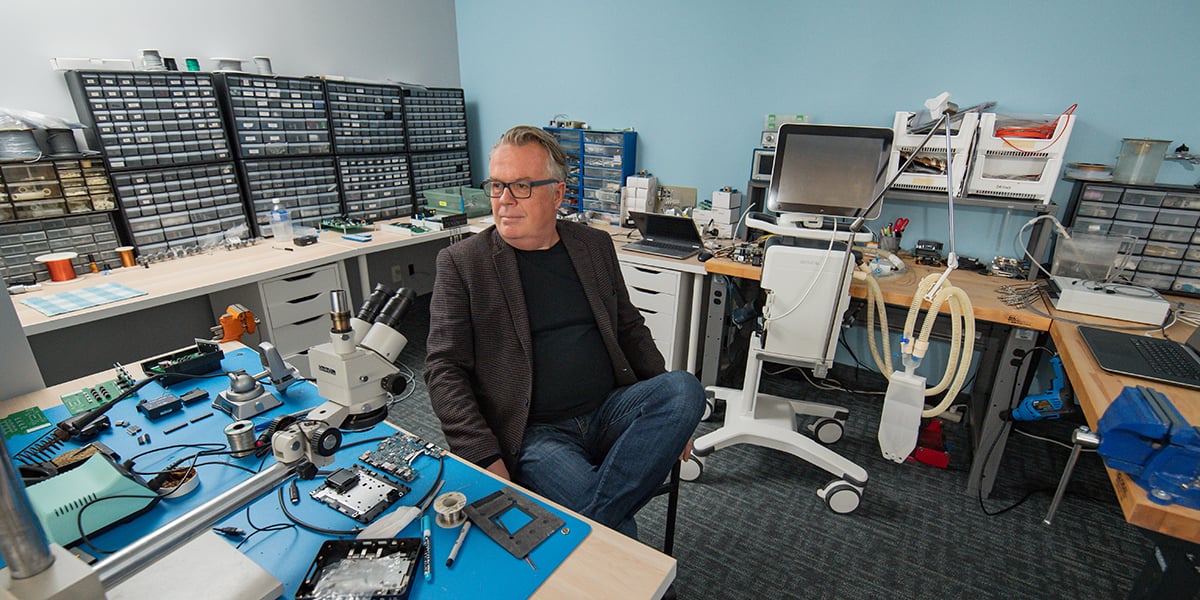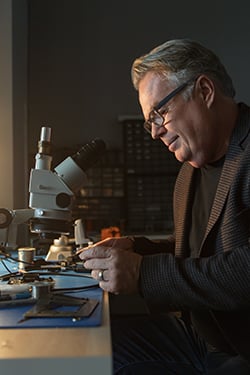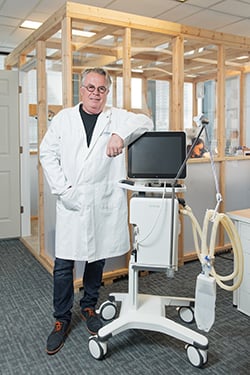Swedish-Canadian researcher Christer Sinderby is the man behind Getinge’s patented Neurally Adjusted Ventilatory Assist (NAVA). Using the patient’s own respiratory drive to control ventilator assistance, NAVA has elevated mechanical ventilation to an entirely new level and helped the tiniest premature baby in the world survive.

“We are talking about the ECG of breathing,” Christer says. “Using NAVA in mechanical ventilation is like adding ECG to a stethoscope when monitoring a heart. Both are based on electrical signals and more precise.”
The blowing of air has powered most of Christer Sinderby’s life. In his youth, the talent for mastering the mighty sea breezes enabled him to compete with the best windsurfers in the world.
 As a scientist, the ability to control a few milliliters of air blown into a premature baby’s tiny lungs has earned him and his wife Jennifer Beck respect in the entire medical world. Recently, NAVA played a major role in helping a premature baby in Japan, weighing only 258 grams at birth, survive.
As a scientist, the ability to control a few milliliters of air blown into a premature baby’s tiny lungs has earned him and his wife Jennifer Beck respect in the entire medical world. Recently, NAVA played a major role in helping a premature baby in Japan, weighing only 258 grams at birth, survive.
“It goes without saying that it is hard to sync a ventilator with rapid breaths of only 2-3 milliliters of air. We have managed to use the baby’s own respiratory drive to achieve this synchronization,” Christer explains. “The beauty of NAVA is that it can help all types of patients breathe; no matter if it is a tiny premature baby weighing a few hundred grams or an overweight 90-year old.”
NAVA has been used exclusively by Getinge since it was invented in the mid-1990s. Since 2003, Christer Sinderby is a scientist at the Keenan Research Centre for Biomedical Science, University of Toronto, Canada.
“In principle, NAVA connects the patient’s brain to the ventilator,” Christer says. “The device uses the same electrical signal that activates the diaphragm to control the rhythm, depth and duration of our breathing. This means that the ventilator continuously is fully synchronized with the patient´s own breathing efforts.”
The electrical discharge of the diaphragm is captured by a special Edi catheter; placed in the esophagus and also functions as a gastric feeding tube.
“Since it is the patient’s own physiological signal that control the tidal volume and respiratory pattern, NAVA promotes lung-protective spontaneous breathing and reduces the risk of blowing to much or too little air into the lungs. NAVA simply delivers what the patient wants.”
 Christer adds: “With traditional mechanical ventilation it is often easier to ‘shut down’ an uncomfortable patient with sedation than to finetune the ventilator to deliver the right tidal volume and frequency. This is what we want to avoid.”
Christer adds: “With traditional mechanical ventilation it is often easier to ‘shut down’ an uncomfortable patient with sedation than to finetune the ventilator to deliver the right tidal volume and frequency. This is what we want to avoid.”
Independent of air leakages, NAVA also facilitates non-invasive ventilation with nasal masks or prongs. A much more comfortable alternative than intubating the patient.
Back in 1999, the innovation of NAVA was so remarkable that it was published in the prestigious Nature Medicine.
“I think we are still the only researchers focusing on ventilator technology published there,” Christer says.
Christer Sinderby and Jennifer Beck are still dedicated to improve the abilities of Getinge’s mechanical ventilators.
“We focus on ventilation solutions that will be a reality in 5-10 years. Getinge’s patience with the long-term scope that is a necessity in medical research has paved the way for a partnership with mutual respect for the corporate and scientific perspectives,” Christer concludes.
➞ Learn more about NAVA
What is a ventilator, and why is it needed?
Watch this video to learn more about ventilation and NAVA technology.